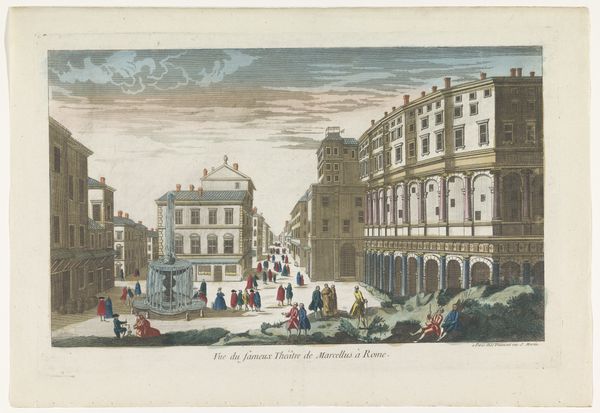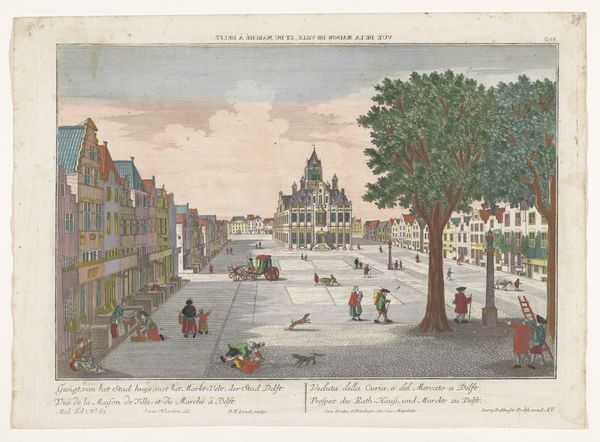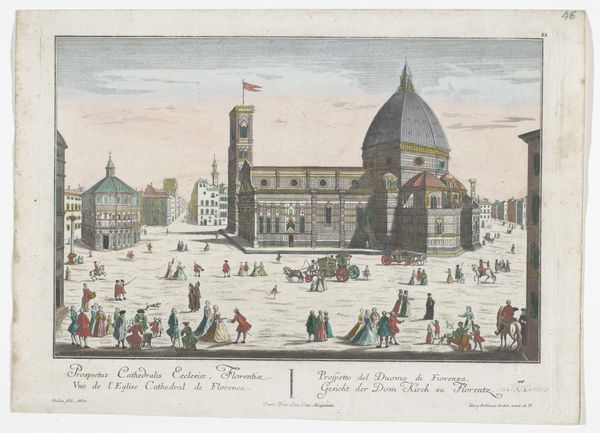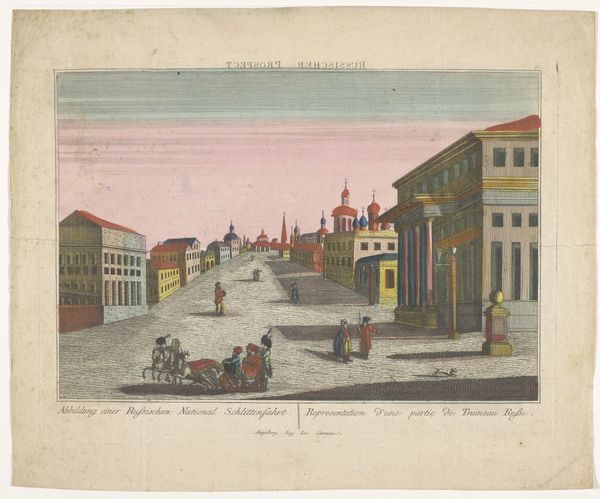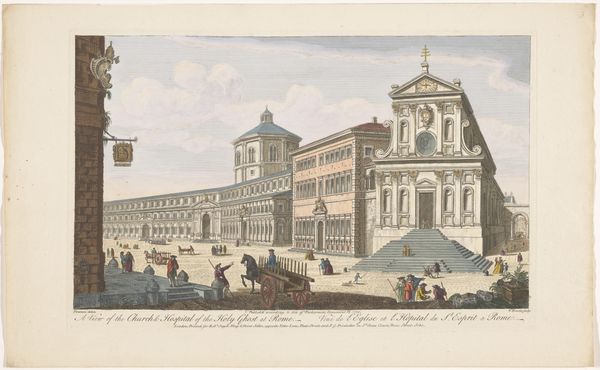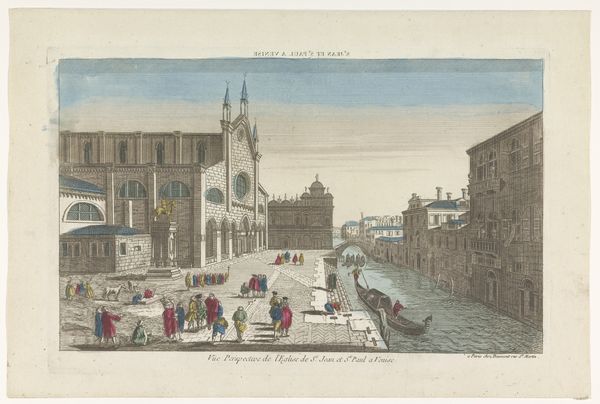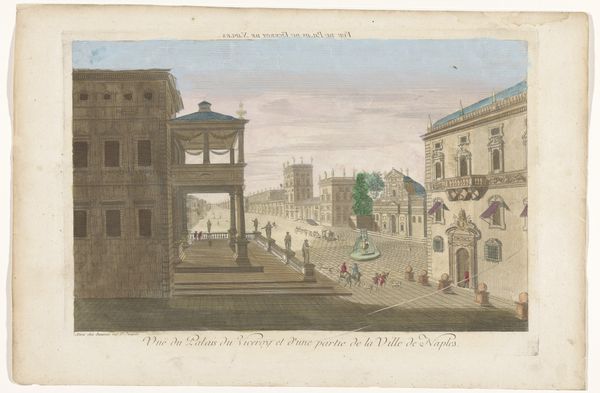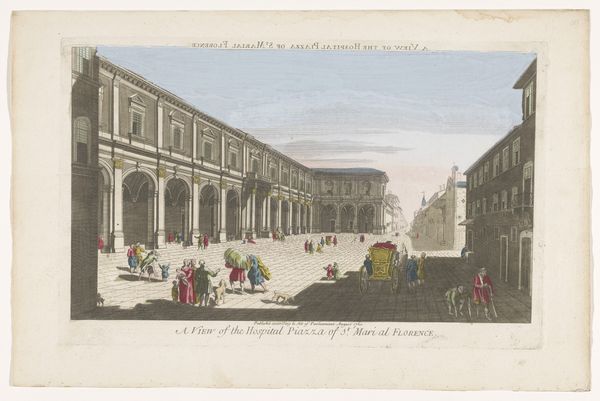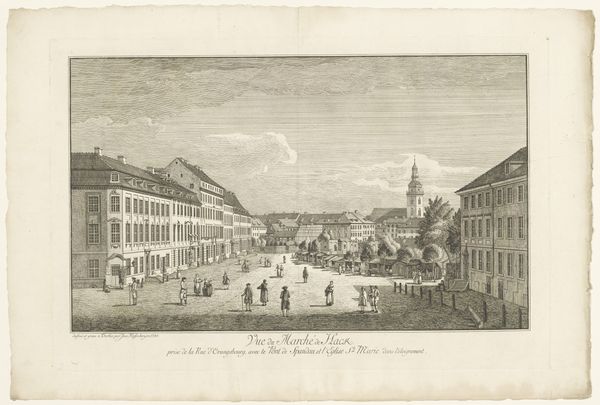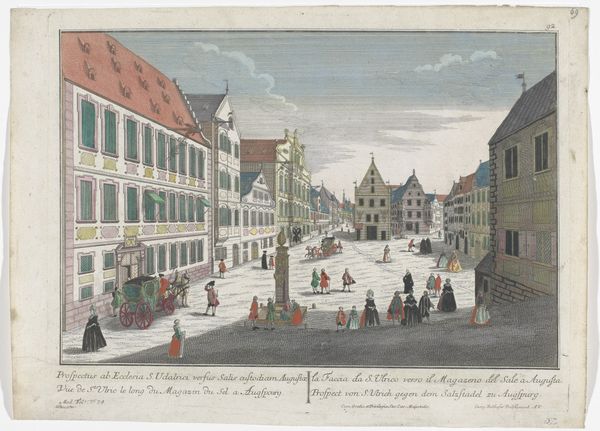
Gezicht op de kerk en het plein San Pier Maggiore te Florence 1742 - 1801
0:00
0:00
georgbalthasarprobst
Rijksmuseum
Dimensions: height 314 mm, width 429 mm
Copyright: Rijks Museum: Open Domain
Curator: Let's discuss this detailed print, "Gezicht op de kerk en het plein San Pier Maggiore te Florence," attributed to Georg Balthasar Probst. It's thought to date from between 1742 and 1801. Editor: It’s quite captivating! The pale washes of color give it an almost dreamlike quality, despite the clear depiction of the architecture. There’s a fascinating contrast between the sharp lines of the buildings and the softer rendering of the sky and figures. Curator: Indeed. The work is crafted through engraving and etching. It presents us with a cityscape, specifically the Piazza San Pier Maggiore. The artist isn’t just documenting architecture, though; this place was central to social and political life. Editor: I see that now – how the artist uses linear perspective to draw our eye to the church at the center, giving it a sense of monumental importance. The color palette enhances that. How might we contextualize the figures bustling around? Curator: These figures really animate the scene, don’t they? Notice the clothing – it reflects the social strata of the time. The print wasn't simply aesthetic; it served as a means of conveying status, aspiration, and understanding of social roles in the city. The Renaissance deeply influenced European urban life and the Italian Baroque focus on display. Editor: It makes me wonder how different gazes interpreted this then and now. As a print, was it widely available or aimed at an elite class with an interest in such perspectives of their own time? Curator: Prints such as this circulated widely as collector's items as well as source materials for later artists. Looking at how the Baroque style merges within the urban fabric is useful, though. The columns that mark the building and offer such dramatic perspective demonstrate its legacy. Editor: It brings a depth to understanding not just the appearance, but how it functions as a statement about Florence and perhaps its values. Curator: I'm intrigued by its narrative potential, seeing this space as an active zone. Editor: Well, considering it purely as an example of artistic interpretation, I find the composition beautifully balanced and aesthetically arresting. Curator: Yes, and grounding it in its historical context enriches that appreciation further.
Comments
No comments
Be the first to comment and join the conversation on the ultimate creative platform.
